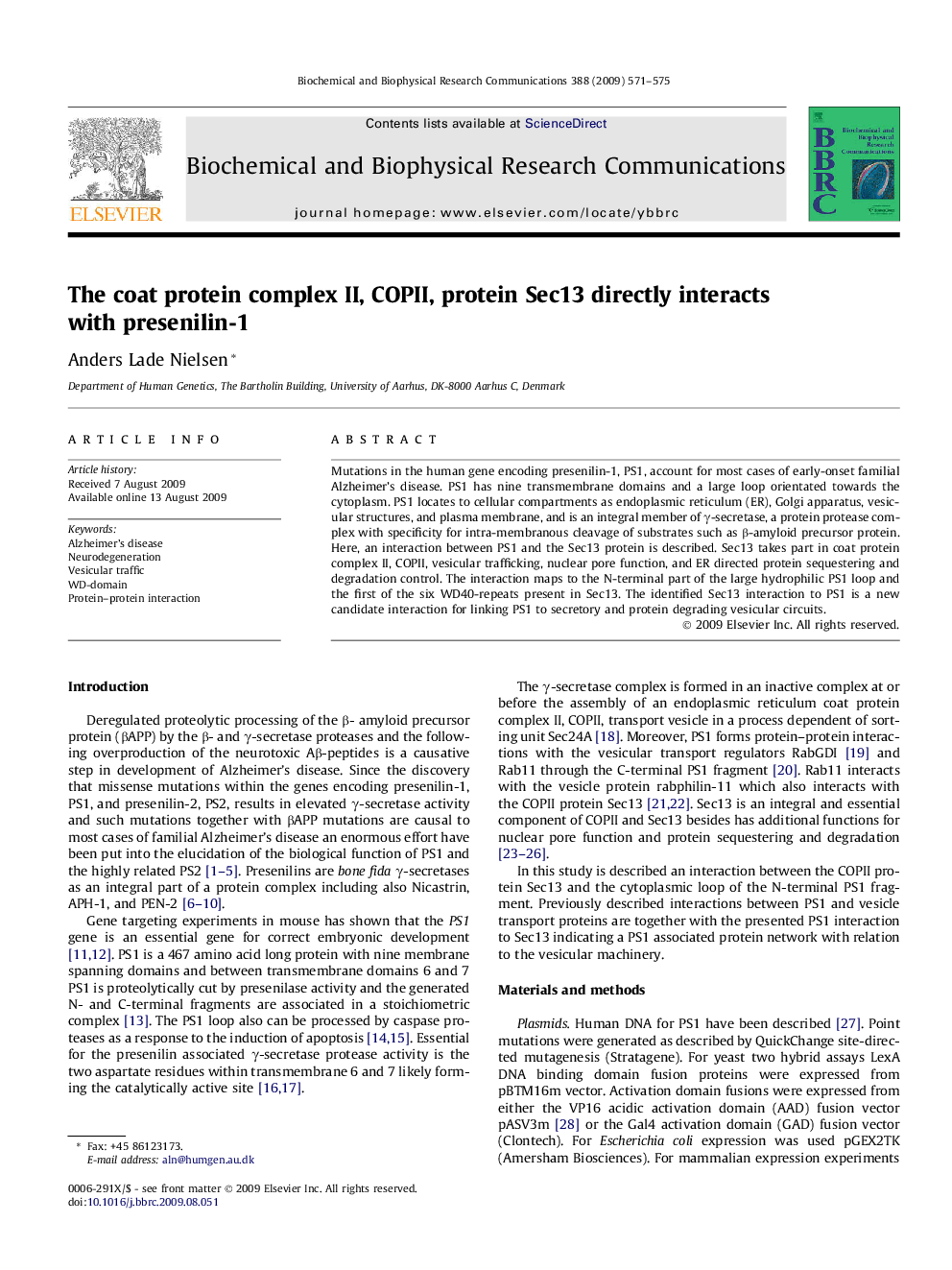| Article ID | Journal | Published Year | Pages | File Type |
|---|---|---|---|---|
| 10765118 | Biochemical and Biophysical Research Communications | 2009 | 5 Pages |
Abstract
Mutations in the human gene encoding presenilin-1, PS1, account for most cases of early-onset familial Alzheimer's disease. PS1 has nine transmembrane domains and a large loop orientated towards the cytoplasm. PS1 locates to cellular compartments as endoplasmic reticulum (ER), Golgi apparatus, vesicular structures, and plasma membrane, and is an integral member of γ-secretase, a protein protease complex with specificity for intra-membranous cleavage of substrates such as β-amyloid precursor protein. Here, an interaction between PS1 and the Sec13 protein is described. Sec13 takes part in coat protein complex II, COPII, vesicular trafficking, nuclear pore function, and ER directed protein sequestering and degradation control. The interaction maps to the N-terminal part of the large hydrophilic PS1 loop and the first of the six WD40-repeats present in Sec13. The identified Sec13 interaction to PS1 is a new candidate interaction for linking PS1 to secretory and protein degrading vesicular circuits.
Related Topics
Life Sciences
Biochemistry, Genetics and Molecular Biology
Biochemistry
Authors
Anders Lade Nielsen,
